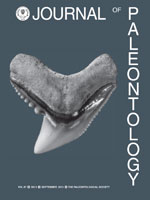The geographic population patterns of Lingula anatina across the Indo-West Pacific region are analyzed based on mitochondrial COI and nuclear EF-1α gene sequences. Compared with the remarkable morphological stasis, genetic evidence of extant Lingula species displays deep genetic divergence. Three distinct COI lineages were detected for L. anatina, one of which is from Qinhuangdao (Hebei, China, Bohai Sea), the other two from Beihai (Guangxi, China, Gulf of Tonkin). Individuals from South Japan have a very close relationship with one of the two COI lineages found in Beihai, which is also supported by EF-1α results, suggesting a relatively recent migration between South China Sea and East China Sea. Genetic distances between the three lineages of L. anatina are rather high (8.9%, 8.6%, and 2.7%), and those between L. anatina and L. adamsi is much higher (44.5%), compared to other marine invertebrates. Both tectonic evolution and the repeated Quaternary glaciations have contributed to the complex phylogeographic pattern found in these recent Lingula anatina populations.
How to translate text using browser tools
1 September 2013
Deep Genetic Divergence Within a “Living Fossil” Brachiopod Lingula anatina
Shujuan Yang,
Xulong Lai,
Guilian Sheng,
Shuoshuo Wang
ACCESS THE FULL ARTICLE

Journal of Paleontology
Vol. 87 • No. 5
September 2013
Vol. 87 • No. 5
September 2013




